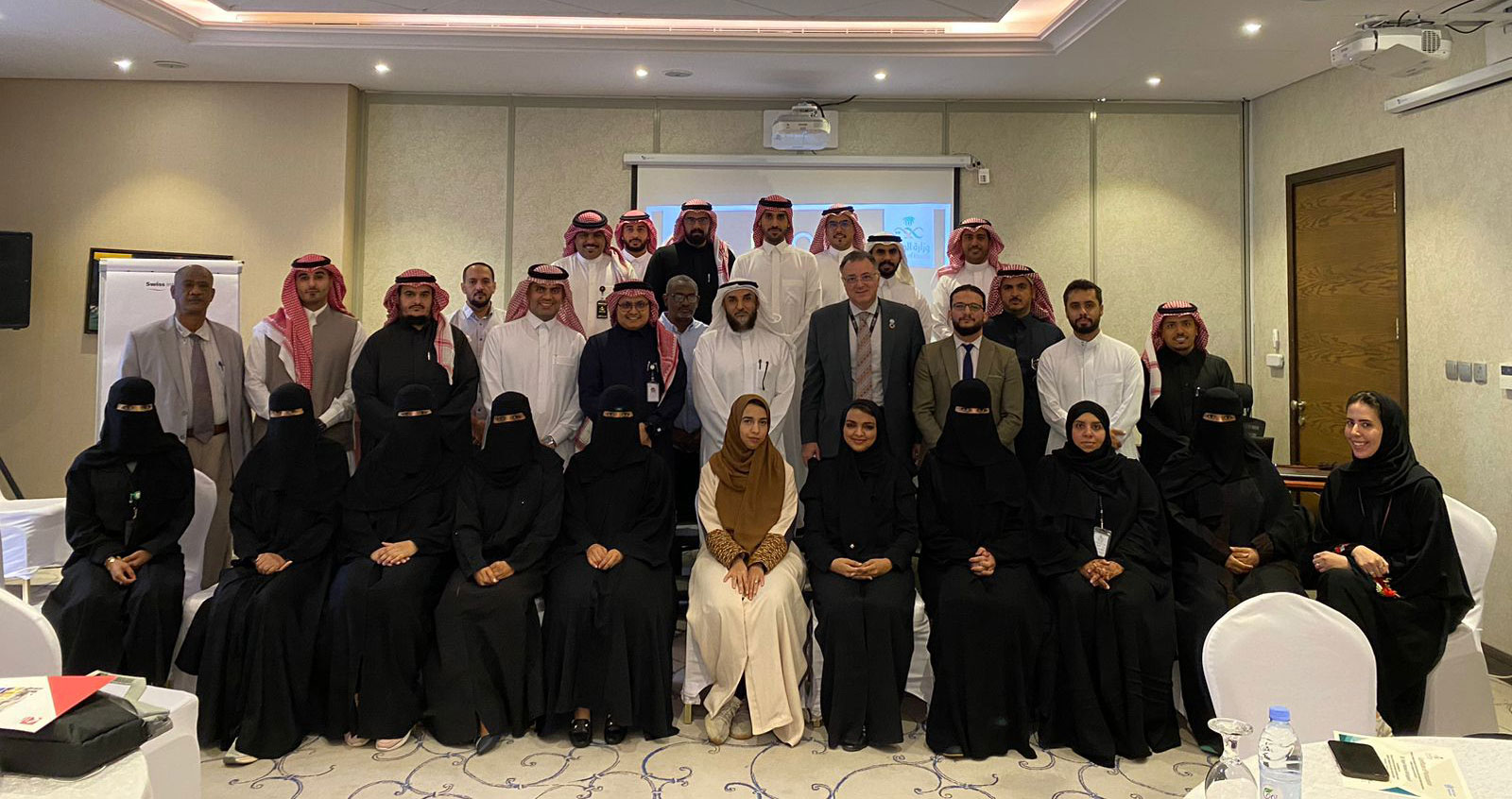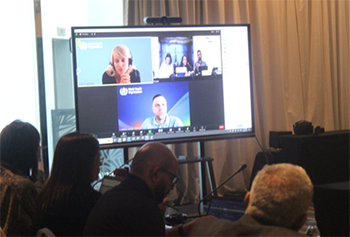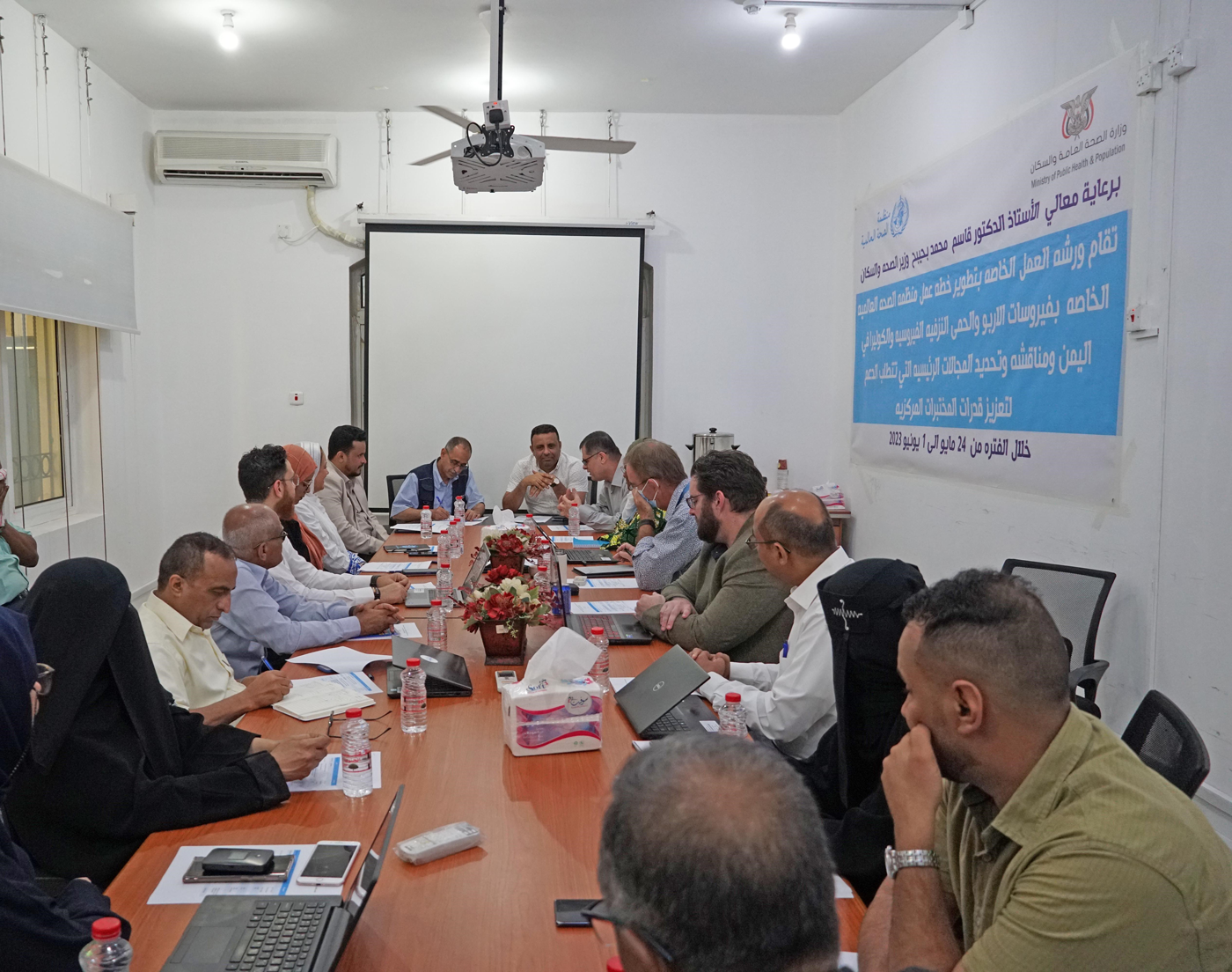WHO leads EIOS training to strengthen disease surveillance in Saudi Arabia
 A group photo of the training participants. Photo credit: A. Zuhair
A group photo of the training participants. Photo credit: A. Zuhair
18 April 2024, Cairo, Egypt – Refresher training on the Epidemic Intelligence from Open Sources (EIOS) system has been run by WHO in Riyadh, Saudi Arabia. The training aims to strengthen the existing event-based surveillance (EBS) system within the national surveillance framework by implementing this innovative detection tool.
The 3-day training was attended by EBS staff from various regions of Saudi Arabia, public health emergency operations centre personnel, and other stakeholders involved in EBS within the Ministry of Health of Saudi Arabia. The WHO Regional Office for the Eastern Mediterranean ran the training, which improved participants’ proficiency with the EIOS system.
EIOS allows for the early detection of potential disease outbreaks by providing real-time data and information gleaned by monitoring various open sources of information. These include social media channels, news reports and online health forums. By enabling early detection of potential public health threats, this tool ensures better preparedness and response to health risks and emergencies – not least by keeping decision-makers well-informed.
 Participants listen to a WHO expert during one of the training sessions. Photo credit: WHO/M. FawzyThe EIOS system and this training sit under the WHO EIOS initiative, which aims to enhance capacities for the rapid detection, assessment and follow-up of all public health risks.
Participants listen to a WHO expert during one of the training sessions. Photo credit: WHO/M. FawzyThe EIOS system and this training sit under the WHO EIOS initiative, which aims to enhance capacities for the rapid detection, assessment and follow-up of all public health risks.
The initiative, a unique partnership between bodies involved in epidemic intelligence, seeks to strengthen public health intelligence and build a network to minimize the impacts of emerging risks to human health. The EIOS system supports this network, by allowing its members to collect and filter open-source information to facilitate the timely detection, assessment, and rapid reporting of such risks.
The WHO Regional Office team had previously run an in-depth EIOS training in Saudi Arabia in 2023, since the country leverages the power of EIOS during the annual Hajj pilgrimage. It is estimated that more than 3 million people take part each year in the Hajj season – a mass gathering that poses unique public health challenges.
This earlier training effectively addressed the country’s specific needs, requests and questions about EIOS. Among other things, and working closely with Saudi Arabia’s Ministry of Health, a dedicated Hajj category was added within the EIOS system. This context-specific adaptation allows the tool to be used for focused monitoring and early detection of potential health risks associated with the pilgrimage.
WHO will continue to support Saudi Arabia to ensure the EIOS system’s effective implementation and integration for the benefit of the country and its people.
Related links
Epidemic Intelligence from Open Sources (EIOS): zero impact from health threats
Annual meeting for country focal points of pandemic influenza preparedness in the EMR - July 2023
Infectious Hazard Preparedness unit at EMRO organized the first Pandemic Influenza Preparedness (PIP)/ Centers for Disease Control and Prevention (CDC) meeting to discuss influenza and other respiratory preparedness and response regional programme management in Casablance-Morocco between 3-5 July 2023 with the presence of PIP focal points at country offices, an expert at Regional and HQ level, CDC and PIP secretariate teams at HQ.

During the three-day meeting, the participants had the opportunity to deep dive into what has worked and what has not and to discuss country-specific achievements, opportunities, and challenges in great detail, this includes addressing policy and planning, collaborative surveillance, community protection and access to countermeasures. As well as advancing the M&E skills related to PIP plan implementation. Moreover, The regional office launched a new project management tool, which will help in advancing the project architecture together with the management of the PIP plans and coordination and reporting mechanisms.
In the opening remarks of the WHO Representative of Morocco, Dr Maryam Bigdeli, said “As we come to the end of High-Level Implementation Plan II and welcome a new cycle of planning, we have an opportunity to reflect on the successes and challenges of the past 10 years. In the face of numerous emergencies and competing priorities in our region, we have made significant strides in pandemic preparedness and response, building on PIP infrastructure and funds.”
At the end of the meeting, participants reached a consensus that preparedness, prevention, and response activities must not be the responsibility of the health sector alone, and committed to the collaborative responsibility across all sectors. Participants took on an integrated approach to strengthening pandemic planning, by applying common systems, strengthening capacities, and advancing knowledge about the groups of pathogens, based on their mode of transmission. Participants came up with list of recommendations, to use synergistic approaches and strategies to allow more coherent and efficient actions, with the objective of strengthening capacities and systems, especially in countries in emergency settings.

Furthermore, the group prioritized focus on overcoming the limitation in genomic/epidemiological data sharing, under the "One Health" approach, by means of improving collaboration among relevant stakeholders from across sectors, including human and animal sectors, and developing regional policies to prepare for future pandemics and advocate to keep pandemic preparedness a top priority.
WHO builds surveillance and laboratory capacity on high-threat pathogens and genomic sequencing in Yemen
 WHO expert during the training session, Aden
WHO expert during the training session, Aden
Cairo, 5 June 2023 – WHO conducted a technical mission to Aden, Yemen, on 24 May–1 June, to assess and enhance country capacity for the detection and surveillance of high-threat pathogens, such as arboviral and acute watery diarrhoeal disease.
Members of the mission held a meeting in the WHO Aden sub-office with representatives from the Ministry of Public Health and Population, national and subnational surveillance teams, Central Public Health Laboratory and WHO laboratory experts.
WHO experts discussed existing surveillance mechanisms for high-threat pathogens, identified gaps and proposed mechanisms for improving the existing detection and surveillance system in Yemen. Clear goals, objectives, timelines and targets were agreed upon to improve overall surveillance and coordination between the laboratory, surveillance, logistical and public health authorities.
To enhance the capacity for detecting and characterizing high-threat pathogens, the team organized a comprehensive training session at the Central Public Health Laboratory in Aden. The training focused on utilizing the Oxford Nanopore Technology sequencing – a platform for metagenomic sequencing of acute watery diarrhoea. It covers both theoretical and practical aspects of identifying pathogens through metagenomic analysis, as well as essential laboratory principles, such as good laboratory practices, biosafety and risk assessments, in line with WHO laboratory biosafety standards.
The training also covered assessment modules and emphasized continuing professional development for the 9 participants from Yemen, following a training of trainers approach to ensure the long-term sustainability of the laboratory programme across Yemen.
 Participants identified gaps and improvement mechanisms
Participants identified gaps and improvement mechanisms
The meeting and training were well received by the attendees and health authorities, with further steps clearly defined for the national laboratory and surveillance programme and for improved collaboration within teams.
A national disease surveillance system is dependent on a strong and sustainable laboratory network, working in partnership with a robust, coordinated surveillance and epidemiology programme. The ability to detect, report and respond to public health threats requires a clear understanding of the roles and responsibilities for each pillar of the surveillance network and reporting actionable data to health authorities to ensure responses are appropriately supported.
This mission is part of WHO’s ongoing technical and logistical support to countries, including countries experiencing complex emergencies, to improve laboratory capacity and to enhance available diagnostic capabilities, to ensure that they can respond to emergencies in a timely and coordinated manner.
Related links
Training on influenza and SARS-CoV-2 genetic sequencing in Muscat, Oman
Investment in genomic surveillance: a priority for the Region


